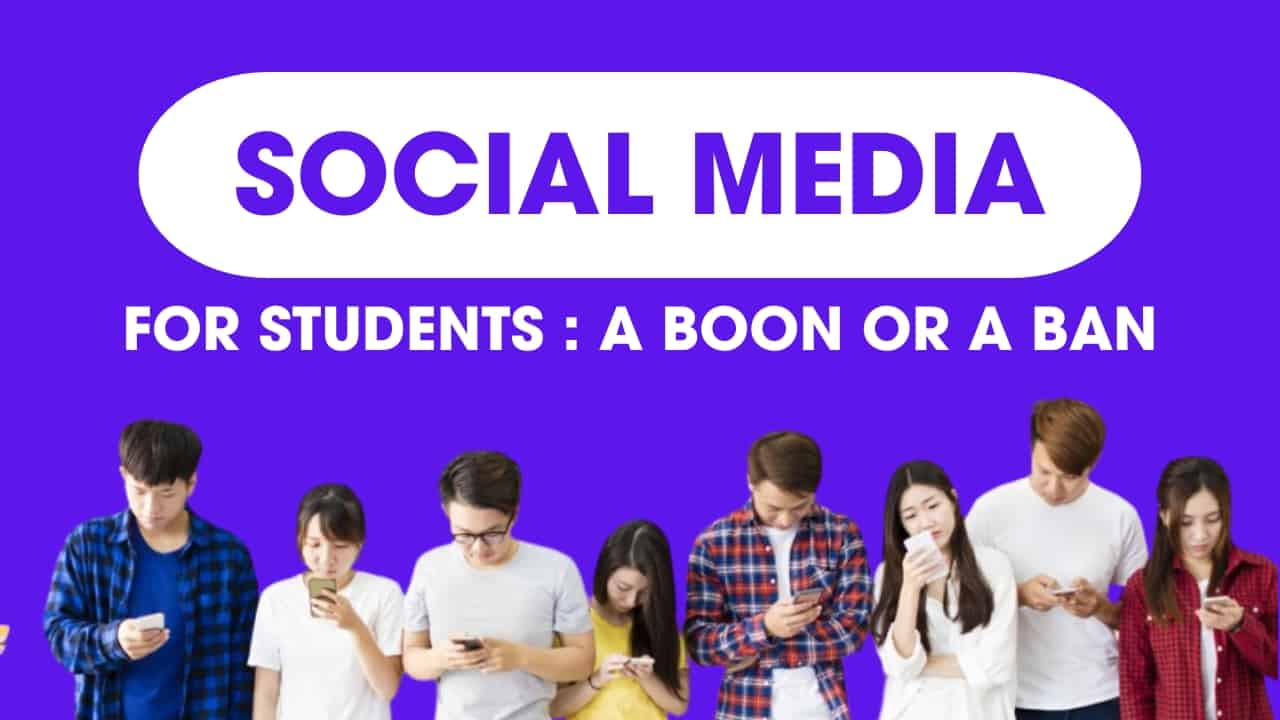Social media has become increasingly popular among the age groups of 12- 25. Most peers among this age group are students who are considered the future of our country or the world. Due to the increased use of social media, the direction in which the student group is heading is concerning. In this write-up, we will discuss the impact of social media on students’ lives and how it affects them positively or negatively.
List of 11 Impacts of Social Media on Students
Positive Impact
1. Connecting the world
There is no doubt that social media has connected the world together. People, mostly students, are aware of the issues going on in the world and can come up with their opinions and solutions to the problems, making us all one big family. In the student world, it is one of the most positive uses of social media.
2. Access to information
With everything available online, students have the ease of communication and a platform to make themselves feel heard.
3. Networking opportunities
Through social media, students can now easily gain information about a college from a current student or an alumnus of that college they are researching. Students can talk to hundreds of other students to fetch reviews or inside information about the institutions and save their career or not enroll in a college or course that can potentially ruin their future.
4. Online Activism
Students can put up posts, make reels, or tweet if they face any dilemma. Social media has given students a platform to raise their voices and be heard by billions of people. And work towards making this world a better place.
Negative Impact
5. Reduced concentration
With the increased use of social media and increased consumption of short-form content such as Instagram reels, YouTube shorts, and tic-tok. The concentration levels in students have increasingly dropped. Students cannot sit in lectures for a long duration without fidgeting. Students prefer to watch videos at 2x speed rather than normal speed because they feel watching it at normal speed is time-consuming also, they do not have the patience
6. Dopamine
Social media has a reinforcing nature. It activates the brain’s reward centre by releasing dopamine. Dopamine is a feel-good chemical that is the excitement or anticipation we feel before receiving a reward. This dopamine is what makes social media so addictive.
Whenever we open Instagram, YouTube, or any social media, we get excited about what we will see today. Will it be something new? Or funny? Or something that I will love? This makes us addicted to the app, and we return to it repeatedly.
7. Effects on studies
As students get addicted to these apps, they neglect their studies or procrastinate till the date their exam arrives. Even when their exam date arrives, they are still not willing to study because they are so addicted to social media. Because they find studying boring since it requires deep concentration for long hours, which they aren’t able to do. As a result, their careers and mental health suffer.
8. Effects on physical health
Scrolling through social media and using mobile for a long period of time causes strain on the eyes. It also spoils our posture, giving us a hunched back. Since students are sitting for a long period of time, it also causes obesity, which in turn increases the risk of heart attacks
9. Effects on mental health
Social media takes a serious toll on the mental health of the students. It develops a feeling of envy and jealousy. We feel insecure when we see people our age achieving great things, going on expensive trips, eating at a fancy restaurant, or partying with large groups of friends. Students start feeling inferior and start hating their lives. Since social media has been on the rise, depression and anxiety rates among students have also been on the rise.
10. Privacy threat
Since students share so much of their lives on social media, privacy has been a real threat to them. With the advancement of AI technology, it is easy to misuse photos and manipulate them. Fake videos have been a great issue of concern among students. Whenever something like this happens, the students are not able to face society; they feel ashamed, so they resort to the worst decision of their life, which is committing suicide.
12. Fake news
Fake news and gossip spread like wildfire. Students sometimes intentionally or unintentionally spread fake news on social media without thinking about the repercussions or the image of the person being targeted.
Conclusion
Today, we are connected yet the loneliest generation of students. Social media is an integral part of the student’s life, but it comes with boons and bans. After all, we must decide whether to use social media to make our future or ruin it altogether. Students hold the power to make this world a better place as they are the future of this world. So, we need to use social media only for good causes and eliminate its use for any bad cause, which can be done by implementing strict laws against its misuse.
